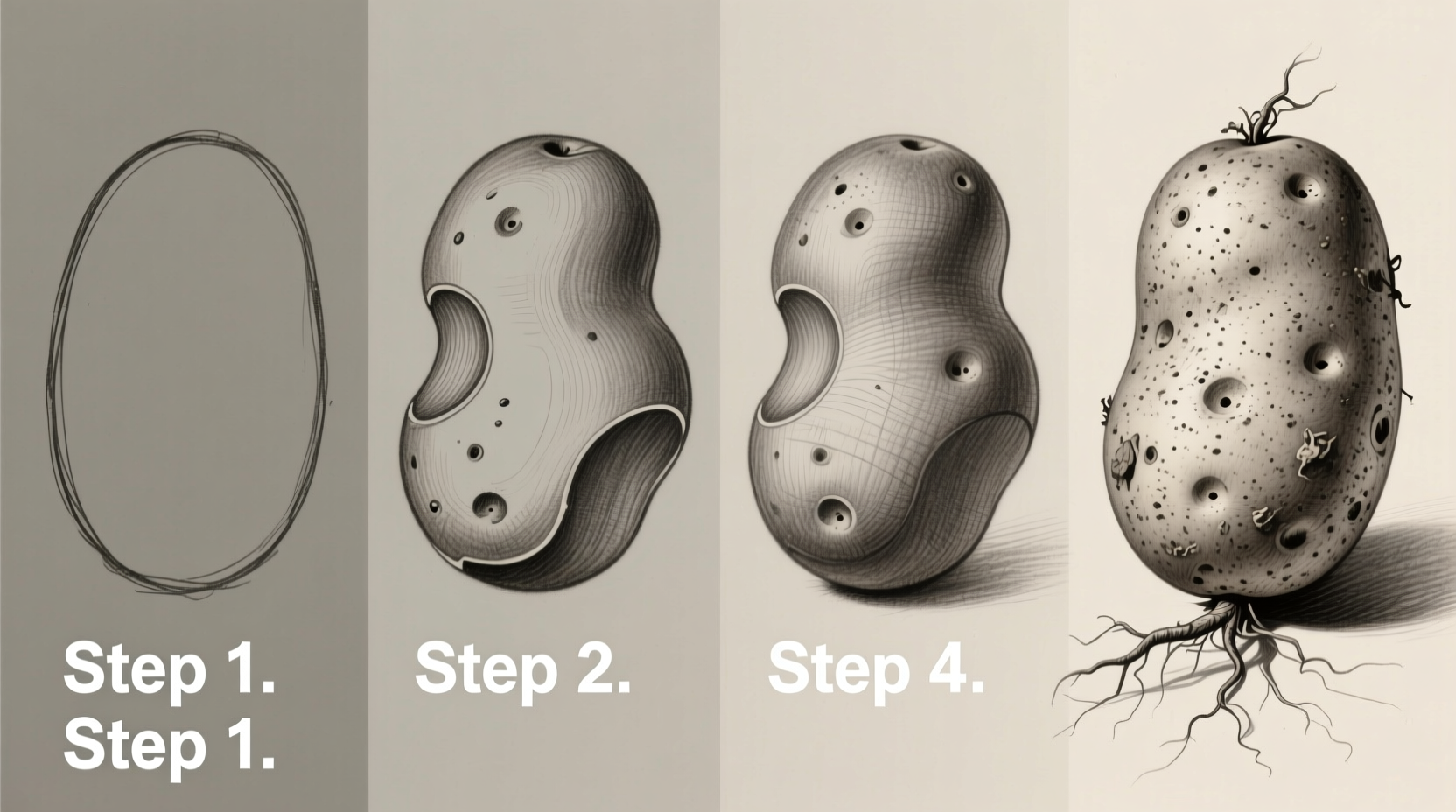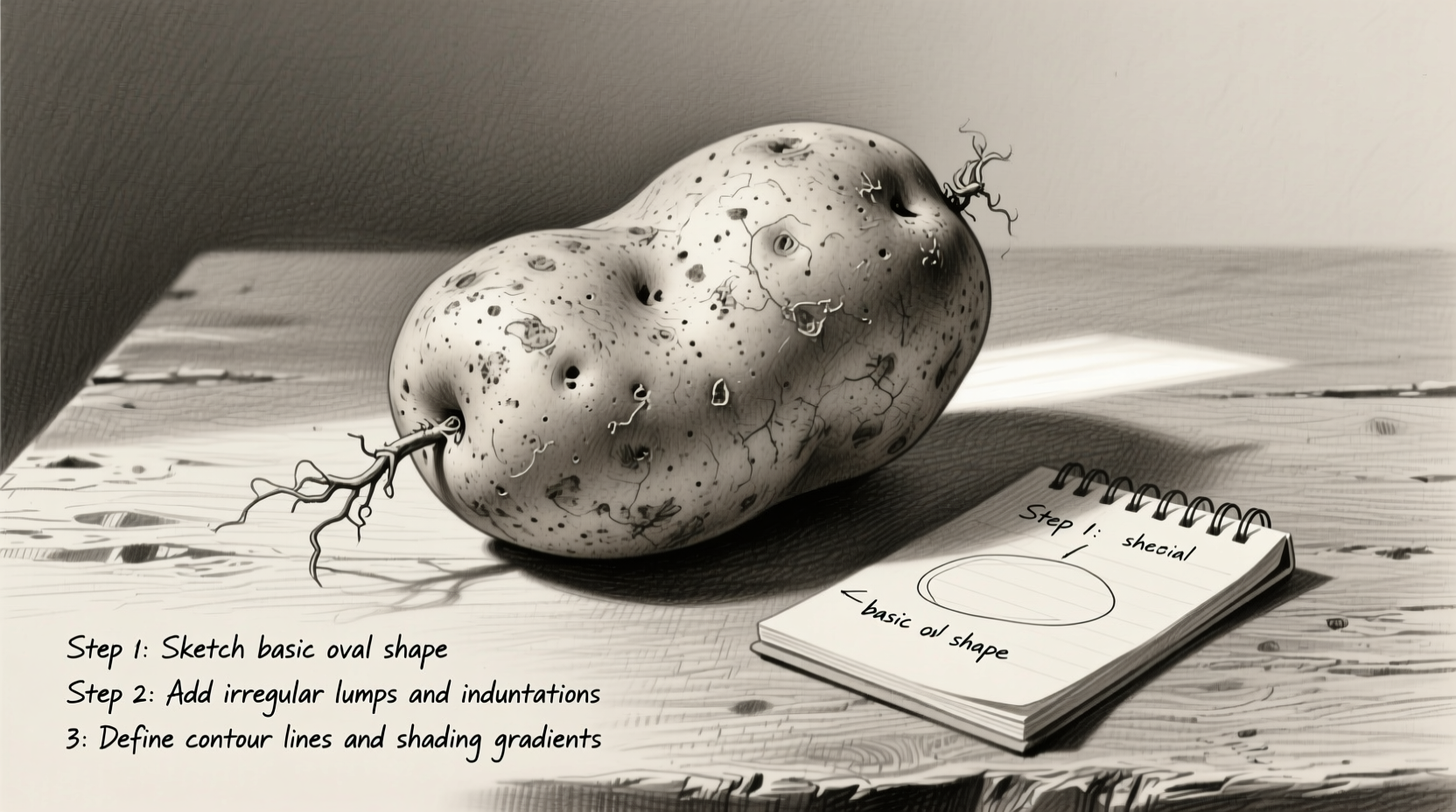Learn how to draw a potato in 7 simple steps with this beginner-friendly guide. You'll master basic shape construction, texture creation, and shading techniques to create a realistic potato drawing using just pencil and paper. No prior art experience required.
Have you ever wondered how professional artists make simple objects look so lifelike? Drawing a potato might seem basic, but it's actually the perfect subject for developing foundational art skills. Many art schools use humble vegetables like potatoes to teach beginners because they offer complex organic shapes without intimidating details. In this comprehensive guide, you'll discover why drawing potatoes is a time-honored tradition in art education and how to create your own convincing potato illustration.
Why Drawing Potatoes Builds Essential Art Skills
Before we dive into the step-by-step process, let's understand why art instructors have used potatoes as drawing subjects for generations. Potatoes provide the ideal balance of simplicity and complexity for beginners. Unlike geometric shapes, potatoes have organic, irregular forms that teach you to observe subtle variations in contour and surface texture. According to the National Gallery's educational resources, "drawing everyday objects builds observational skills that form the foundation of all representational art."
Essential Materials for Drawing Success
You don't need expensive equipment to draw a realistic potato. Here's what you'll need:
- HB or 2B pencil (versatile for both light sketching and darker shading)
- Soft eraser (kneaded erasers work best for subtle corrections)
- Smooth drawing paper (printer paper works fine for practice)
- A reference potato (choose one with interesting features)
Understanding Potato Anatomy for Accurate Drawing
Before putting pencil to paper, take time to study your potato's unique characteristics. Potatoes come in various shapes and sizes, each with distinctive features that affect how you'll draw them. The table below shows common potato varieties and their drawing implications:
| Common Potato Variety | Shape Characteristics | Drawing Considerations |
|---|---|---|
| Russet | Elongated oval with rough skin | Focus on deep eyes and prominent texture variations |
| Yukon Gold | Rounded with smoother skin | Emphasize subtle surface variations and gentle curves |
| Red Potato | Round to oblong with thin skin | Highlight smooth transitions and minimal texture |
| Sweet Potato | Tapered with irregular shape | Capture dramatic form changes and surface cracks |
This comparison helps you understand how different potato varieties require slightly different drawing approaches while maintaining the same fundamental techniques.
Step-by-Step Guide: How to Draw a Potato
Step 1: Establish Basic Shape Construction
Start with the simplest geometric shape that approximates your potato's overall form. Most potatoes can be reduced to an oval or egg shape. Draw this lightly with your HB pencil. Professional art educator Betty Edwards, in her book "Drawing on the Right Side of the Brain," emphasizes that "all complex forms can be broken down into simple geometric shapes." This foundational approach prevents beginners from getting overwhelmed by details too early.
Step 2: Refine the Contour Line
Now modify your basic shape to match your potato's specific contours. Notice where the potato deviates from a perfect oval - perhaps one side is flatter or has a noticeable bulge. Draw these variations as gentle modifications to your initial shape. Remember to keep your lines light at this stage; you're establishing the potato's overall silhouette.
Step 3: Map Major Features
Identify and lightly mark the potato's eyes (the small indentations where sprouts grow). These serve as important landmarks for your drawing. Don't draw them as perfect circles - real potato eyes are irregular and often slightly sunken. Position them according to your reference potato, considering how they break up the surface.

Step 4: Define Form with Basic Shading
Establish where your light source is coming from (imagine a single lamp illuminating your potato). The side facing this light will be brightest, while the opposite side falls into shadow. Begin adding a light tone to the shadow areas using your pencil at a 45-degree angle. This initial shading helps define the three-dimensional form of your potato.
Step 5: Develop Surface Texture
Potatoes have distinctive skin texture that varies by variety. Using a sharp pencil point, create tiny irregular marks to suggest the potato's surface. For russet potatoes, make slightly darker, more pronounced marks; for smoother varieties, use lighter, more subtle variations. The key is to vary your marks - real potato skin isn't uniformly textured.
Step 6: Enhance Dimension with Contrast
Strengthen the darkest areas, particularly around the eyes and where the potato curves away from the light. Use a 2B pencil for these areas if you have one. Remember that the darkest shadows often occur where surfaces change direction abruptly. Don't make these areas solid black - maintain some texture visibility even in the shadows.
Step 7: Final Details and Refinements
Add the finishing touches by refining edges, adjusting contrast, and ensuring your drawing has a complete range from light to dark. Use your eraser to lift out highlights where the light hits the potato most directly. Step back from your drawing periodically to check proportions and overall balance. A professional trick: view your drawing in a mirror to spot any proportion issues your brain might be compensating for.
Avoiding Common Potato Drawing Mistakes
Even experienced artists can stumble when drawing simple objects. Here are frequent errors to watch for:
- Overcomplicating too early - Starting with details before establishing basic shape
- Ignoring light direction - Inconsistent lighting destroys realism
- Perfect symmetry - Real potatoes are delightfully irregular
- Uniform texture - Potato skin varies across the surface
- Hard edges everywhere - Most organic forms have soft transitions
Practice Exercises to Improve Your Potato Drawings
Mastering potato drawing takes practice. Try these exercises to build your skills:
- Blind contour drawing - Draw your potato without looking at your paper for 5 minutes. This improves hand-eye coordination.
- Value scale practice - Create a 5-step value scale from light to dark using only pencil pressure.
- Multiple angles - Draw the same potato from three different viewpoints.
- Texture focus - Spend 10 minutes drawing just a small section of potato skin.
From Potato to Professional: Building Your Art Journey
Once you've mastered drawing a single potato, challenge yourself with more complex arrangements. Try drawing multiple potatoes together, exploring how they interact with light and cast shadows on each other. The Metropolitan Museum of Art's educational resources note that "still life drawing, beginning with simple objects, develops the observational skills necessary for all artistic disciplines." Your potato drawing is just the beginning of a potentially rich artistic journey.











 浙公网安备
33010002000092号
浙公网安备
33010002000092号 浙B2-20120091-4
浙B2-20120091-4